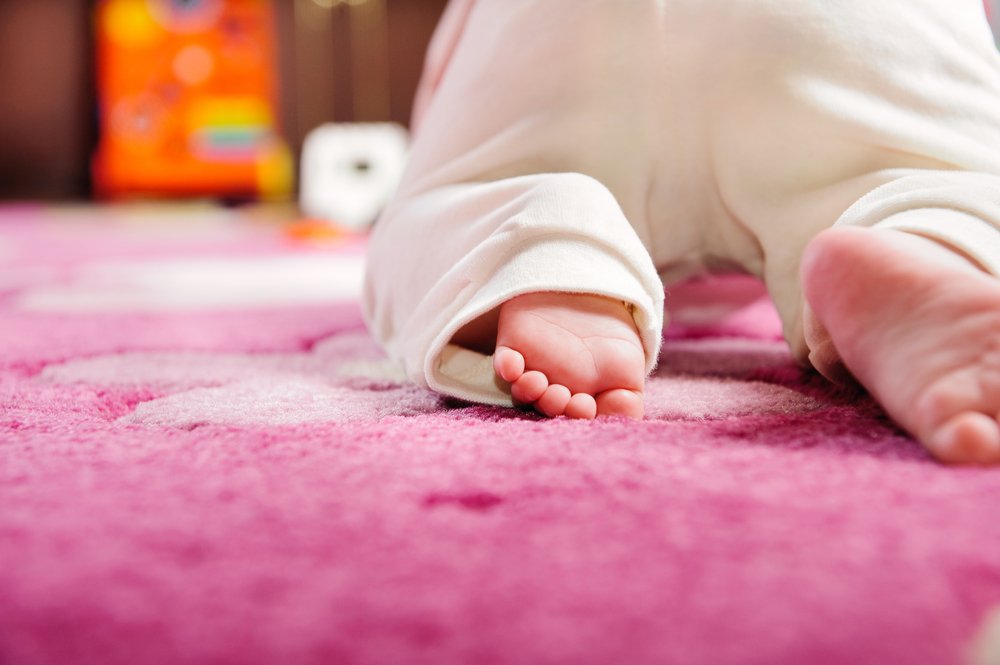Key points:
- Crawling usually occurs between 8-10 months, but the window for crawling can start around 6 months.
- Look for early signs like pushups during tummy time and arm movements.
- It’s not important when or how your baby crawls; what matters is their mobility and motor development.
- Babies might use various methods like scooting, rolling, or slithering before traditional crawling.
We previously talked about preparing your little one for crawling, and the many skills it involves. For most babies crawling occurs at around 8-10 months. The reason the window for crawling can start at around 6 months is because your baby is working on rolling, sitting, and shuffling so they might start moving to get around before the 8th month.
In these early months, some signs you can look for are little pushups while your baby is on their tummy in which they might lift their head and chest using their arms as support. As they get stronger, they’ll start experimenting and try to move with their forearms; this is why tummy time is so important during this period.
There are also some late crawlers, and the only reason they’re called that is because most babies start grabbing onto furniture and standing up to cruise at around 10-11 months. The truth is that it’s not important when your little one crawls or if they crawl at all; this action will happen when your little one is ready, and their style of crawling might not be what you have in mind. The important part is that they’re mobile and improve their motor development, which includes many other milestones.
As your baby will most likely crawl or move around using other methods during these months, they’ll probably accomplish this after they learn how to sit up. Some babies can sit on their own, while others need a little support; don’t worry, eventually they all get there. When your child does, they’ll learn how to support their head to look around and their neck, back, arm, and leg muscles will be strong enough to support them when they’re on their hands and knees. Once they feel they can support their body, they’ll experiment with different kinds of movement that might involve shuffling, rolling, scooting, or slithering across the room. Regardless of their personal style, their first attempts at this may not lead to any forward movement. We’ve previously talked about how, at first, they might even find themselves moving backwards, instead of forward.
Remember crawling means something different to all babies, so while some might opt for a classic crawl, others might find that by pushing their arms to the floor they can scoot on their bottom to get somewhere. You might notice your baby beginning to move on their belly, rock back and forth, or even crawl across the room. Some kids even begin experimenting with pulling themselves to a standing position. Don’t worry, while it might seem like crawling is the next achievement in your little one’s timeline, actually the most important thing is that they feel motivated to explore their surroundings with any movement they feel comfortable with. Each month you’ll see they’re getting better at bearing more weight on their legs and overall muscles. It’s easy to see the physical milestones, but remember that during this time your little one will also be working on evolving their communication through sounds, facial expressions, gestures, and babbles. They’ll also get used to strangers, so they might experience some anxiety or fussiness when you are out of sight.
Keep up the practice and be patient. The progress, rather than the timing, is what’s important. If you want to learn more about how to support your little one’s crawling skills continue reading: Tips to support my babies crawling skills.








